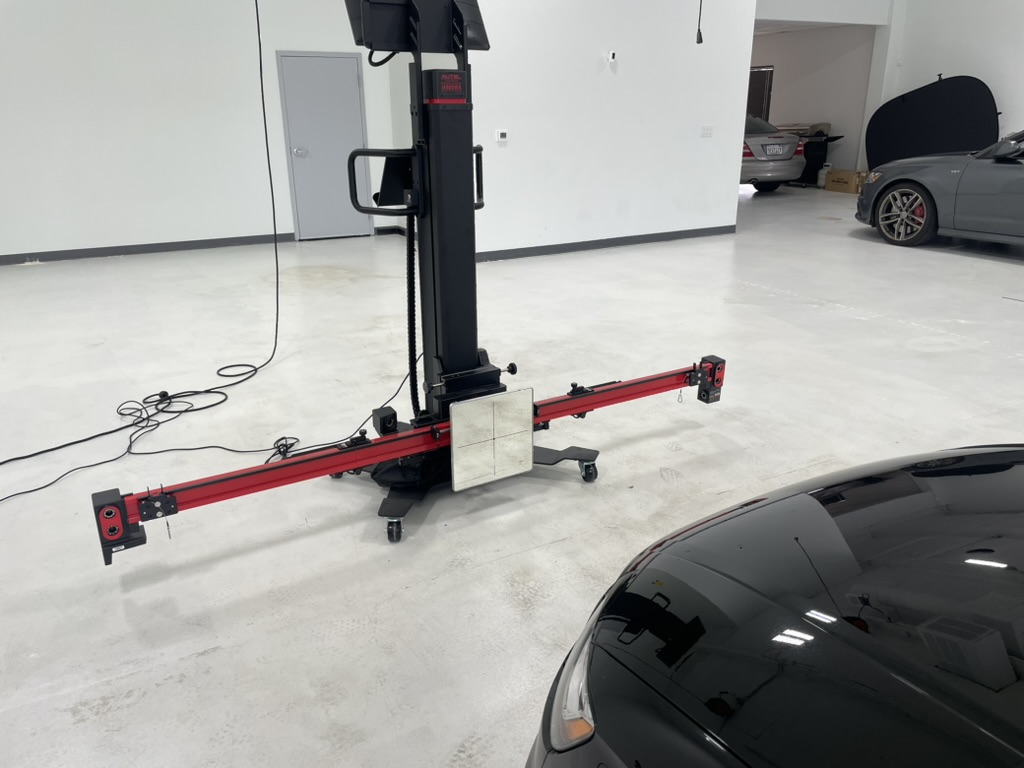Understanding Static and Dynamic ADAS Calibrations: Engineering Tradeoffs and Differences
Ensuring the accuracy and reliability of the ADAS systems in your vehicle requires precise calibration. When it comes to ADAS calibration, two primary methods are employed: static and dynamic calibration. Each method comes with its own set of tradeoffs and considerations. Let's explore the differences between static and dynamic ADAS calibrations, as well as the engineering implications of each. Note that the static versus dynamic calibration is typically made by the OEM.
Static ADAS Calibrations:
Static calibration involves calibrating the sensors and cameras of the ADAS system in a controlled environment, such as a specialized calibration center. With static calibrations, the vehicle is typically parked on level ground, and calibration targets are placed at specific distances and angles.

Pros of Static Calibration:
- Precision: Static calibrations provide a highly controlled environment, incorporating precise measurements used in calibrating ADAS sensors and cameras.
- Consistency: Since static calibration is performed in a controlled environment, the results are consistent and reproducible across different vehicles and calibration sessions.
Cons of Static Calibration:
- Limited Real-World Simulation: While static calibration provides a controlled environment, it may not fully replicate the diverse conditions encountered on the road, such as varying terrain, lighting, and weather conditions.
- Time-Consuming: Static calibration typically requires specialized equipment and trained technicians, making it a time-consuming process compared to dynamic calibrations.
Dynamic ADAS Calibration:
Dynamic calibrations involve calibrating the ADAS system while the vehicle is in motion, typically during a test drive on public roads. During a test drive, the vehicle's sensors and cameras continuously gather data from the surrounding environment, allowing the vehicle's algorithms to adjust and fine-tune their parameters in real-time. Typically you still need a diagnostic tablet while you are performing dynamic calibrations.

Pros of Dynamic Calibration:
- Real-World Adaptability: Dynamic calibrations allow the ADAS system to adapt to real-world conditions, including varying traffic patterns, road surfaces, and environmental factors.
- Efficiency: Since dynamic calibrations are performed while the vehicle is in motion, it can be more efficient than static calibration, requiring fewer specialized resources and potentially reducing calibration time.
Cons of Dynamic Calibration:
- Less Precision: Dynamic calibration relies on real-time data and may not provide the same level of precision as static calibration in controlled environments.
- Variability: The effectiveness of dynamic calibration can be affected by factors such as traffic congestion, road construction, and adverse weather conditions, leading to variability in calibration results. For example, if you live in Michigan and the roads are covered in snow, you are going to have a tough time having the dynamic calibration succeed.
Tradeoffs:
When the OEM decides between static and dynamic ADAS calibration, their engineers must weigh several factors, including precision, efficiency, real-world adaptability, and cost-effectiveness.
Precision vs. Adaptability: Static calibrations offer superior precision in a controlled environment, making it ideal for fine-tuning ADAS parameters. On the other hand, dynamic calibration provides real-world adaptability, allowing the system to adjust to changing conditions on the road.
Efficiency vs. Consistency: Dynamics calibrations are generally more efficient than static calibration, as they can be performed during regular test drives without the need for specialized equipment. However, static calibration offers consistency and reproducibility across different vehicles and calibration sessions.
Cost vs. Performance: Static calibrations may require significant upfront investment in specialized equipment and trained technicians. Dynamic calibration, while less resource-intensive, may lead to variability in performance due to real-world conditions.
In conclusion, both static and dynamic ADAS calibrations have their strengths and weaknesses. The choice between the two depends on factors such as the desired level of precision, adaptability to real-world conditions, efficiency, and cost considerations. Ultimately, engineers must carefully evaluate these tradeoffs to ensure the optimal performance and reliability of ADAS systems in vehicles. Fortunately, we don't have to make the decision of deciding whether to use a static or dynamic calibration process, as that is made for us by the OEM; nevertheless, we wanted to provide some context the next time you do a static or dynamic calibration.
Recent Posts
-
How to Identify ADAS Calibrations
Identifying which calibrations to perform is not necessarily straightforward, yet is a crucial step …12th May 2024 -
Understanding Static and Dynamic ADAS Calibrations: Engineering Tradeoffs and Differences
Ensuring the accuracy and reliability of the ADAS systems in your vehicle requires precise calibrati …7th May 2024 -
Autel VCMI vs VCI
The Autel VCMI (Vehicle Communication Measurement Interface) represents a significant advancement in …28th Apr 2024
